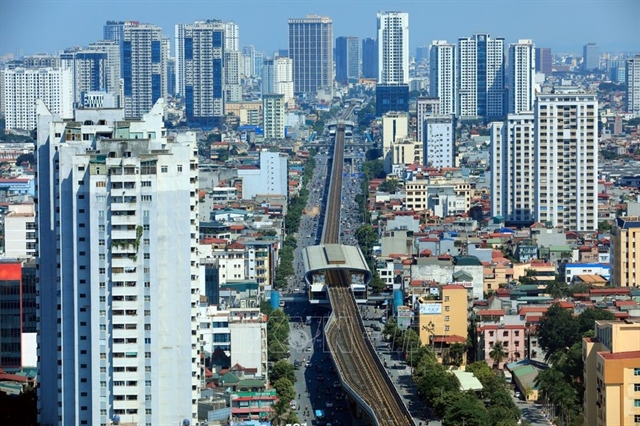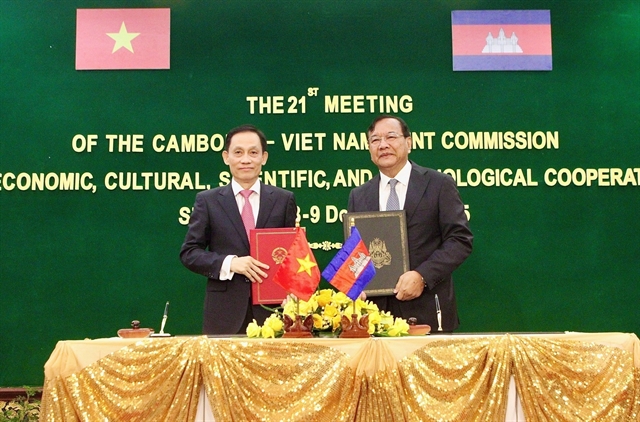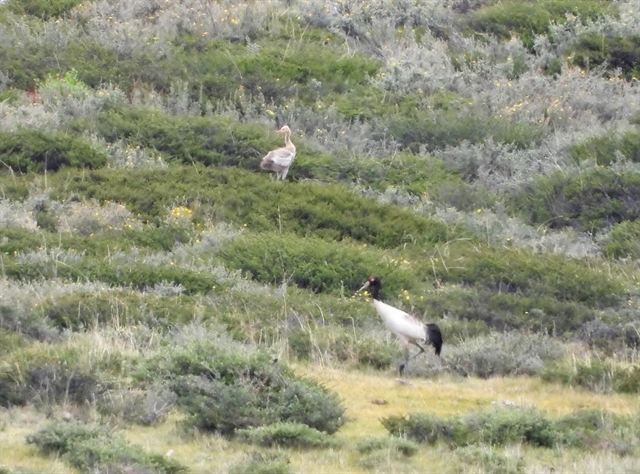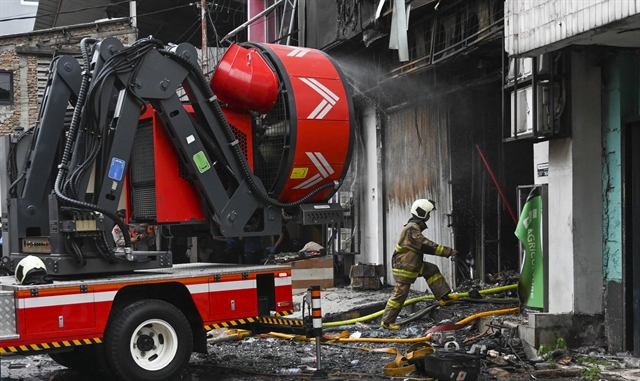 Economy
Economy

.jpg)
|
| Thanks to technological applications in aquaculture, Nguyễn Ngọc Thanh’s family in Phú Hòa Commune, Đồng Nai Province maintains a stable fish supply to the market all year round. VNA/VNS Photo |
ĐỒNG NAI — By embracing science and technology, aquaculture farmers in Đồng Nai Province have been able to increase productivity, lower costs and improve profits.
With its abundance of water resources and agricultural land, and a clear orientation towards sustainable development, Đồng Nai holds vast potential to emerge as a key high-tech aquaculture production hub in southern Việt Nam.
Over recent years, many farmers in the province have invested heavily in high-tech systems that allow better management of water quality, livestock and environmental conditions.
These technologies enable multiple crops per year and deliver superior economic efficiency compared to traditional methods.
At Thành Công Agricultural and Aquaculture Service Cooperative in Phước An Commune, members have long adopted high-tech shrimp farming practices.
Their system integrates every stage of production — from selecting high-quality broodstock to building lined ponds with modern waste and water treatment facilities.
These improvements ensure clean conditions for shrimp growth and effective disease prevention.
According to Nguyễn Huy Bình, director of the cooperative, high-tech brackish-water shrimp farming has delivered much higher yields and profits.
“With an upgraded pond system, we can raise more crops annually while controlling diseases effectively,” he said. “It reduces risks of crop losses and helps stabilise income for farmers.”
Encouraged by its success, the cooperative has expanded its high-tech shrimp farming area to over 30ha.
Bình added that the local government had been proactive in supporting the model by improving infrastructure such as access roads and electricity systems for production.
Not only shrimp farmers but also freshwater fish producers are making progress in applying scientific advances to their operations.
Among them is Phú Điền Fish Farm in Phú Hòa Commune, owned by Nguyễn Ngọc Thanh, who operates a 40-hectare hatchery and manages 166 fish cages on the La Ngà River.
Besides popular freshwater species, his farm raises specialty fish such as catfish, bagrid catfish and Asian redtail catfish, which offer high economic returns.
Every year, his farm supplies around 2,000 tonnes of freshwater fish to major wholesale markets across the country.
“I have inherited my family’s traditional cage-farming experience but have continuously improved it by incorporating scientific knowledge,” Thanh said.
His cages are designed with sturdy walkways for workers’ safety and covered with shading nets to protect fish from heat stress.
Feeding is carefully managed — divided into multiple sessions and adjusted according to daily weather — ensuring efficient use of feed and stable growth rates.
Thanks to these improvements, even during the rainy season when flooding affects many farms along the La Ngà River, Thanh’s cages remain productive.
His farm earns several billion đồng each year (equivalent to about US$120,000), maintaining a consistent supply for domestic markets.
Nguyễn Văn Viện, chairman of the Phú Hòa Commune People’s Committee, said the commune benefits from nearly 10km of the La Ngà River and 200ha of freshwater ponds.
“Freshwater aquaculture here offers stable income and strong market demand,” Viện said.
“We plan to develop safe, high-tech freshwater farming linked with tourism while helping cage-fish farmers expand markets and diversify products.”
He added that local authorities hope to build a brand around the province’s signature species such as cá lăng (bagrid catfish), which is highly valued for its quality and taste.
.jpg)
|
| Fish raised on the La Ngà River in Đồng Nai Province grow quickly and remain healthy thanks to proper care and water management suited to local conditions. VNA/VNS Photo |
A province with vast potential
According to the Đồng Nai Department of Agriculture and Environment, the province currently has nearly 10,000ha of fish ponds, more than 1,500 fish cages and 6,000 floating baskets on rivers.
There are also 20 reservoirs used for aquaculture, covering nearly 52,000 ha.
Total annual aquaculture output exceeds 82,000 tonnes, with fish accounting for about 89 per cent and shrimp about 8 per cent.
The province is home to 27 domestic and 18 foreign-invested enterprises in the aquaculture sector.
Additionally, eight aquaculture cooperatives have been formed, many of which are successfully applying high-tech production and participating in value chain linkages.
Despite being an inland province without a coastline, Đồng Nai possesses a rich network of rivers and lakes such as Trị An Reservoir, the Đồng Nai River and the La Ngà River.
According to Nguyễn Trường Giang, head of the Đồng Nai Sub-Department of Livestock and Fisheries, the recent administrative expansion has further increased the province’s water surface area, offering more opportunities for aquaculture development.
“The market potential is growing, and high-tech aquaculture is becoming a new direction for sustainable economic growth,” Giang said.
He noted that Đồng Nai’s aquaculture development strategy will focus on sustainability, building value chains and aligning production with market demand.
The province aims to prioritise specialty species with high economic value while promoting intensive farming models using advanced technology.
In recent years, pilot models of high-tech aquaculture in Long Thành and Nhơn Trạch communes have shown positive outcomes.
These models integrate automatic water monitoring systems, aeration devices and biofloc technology to maintain water quality and reduce disease risk.
Farmers have reported lower feed costs, faster growth and better control over production cycles.
Authorities plan to replicate these successful models across the province in the near future. “Our goal is to create a modern, sustainable aquaculture sector that not only meets domestic demand but also contributes to exports,” Giang said.
As the province continues to invest in infrastructure, training and technological transfer, experts believe that Đồng Nai is well-positioned to transform itself into a major high-tech aquaculture hub in southern Việt Nam. — VNS




